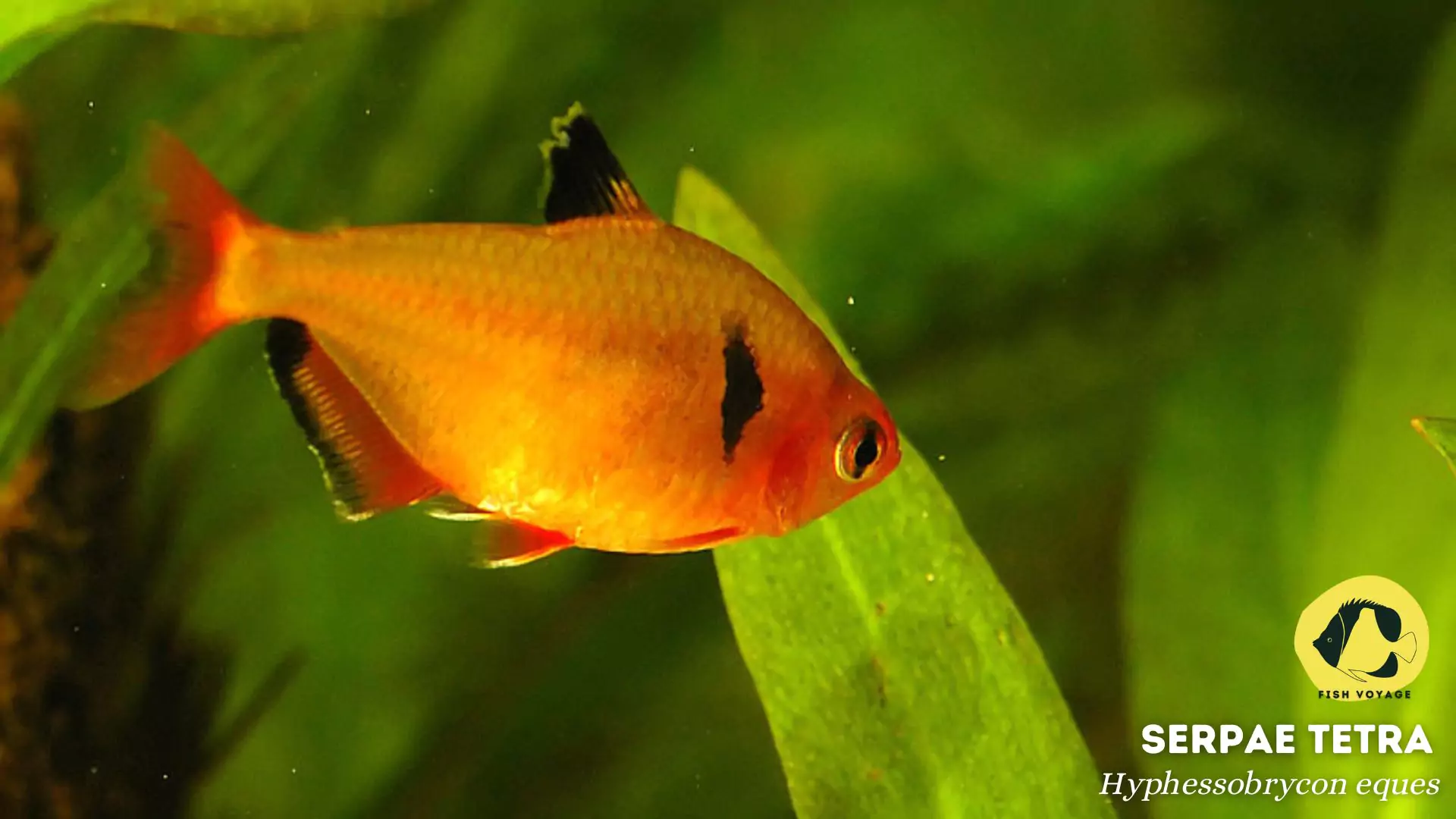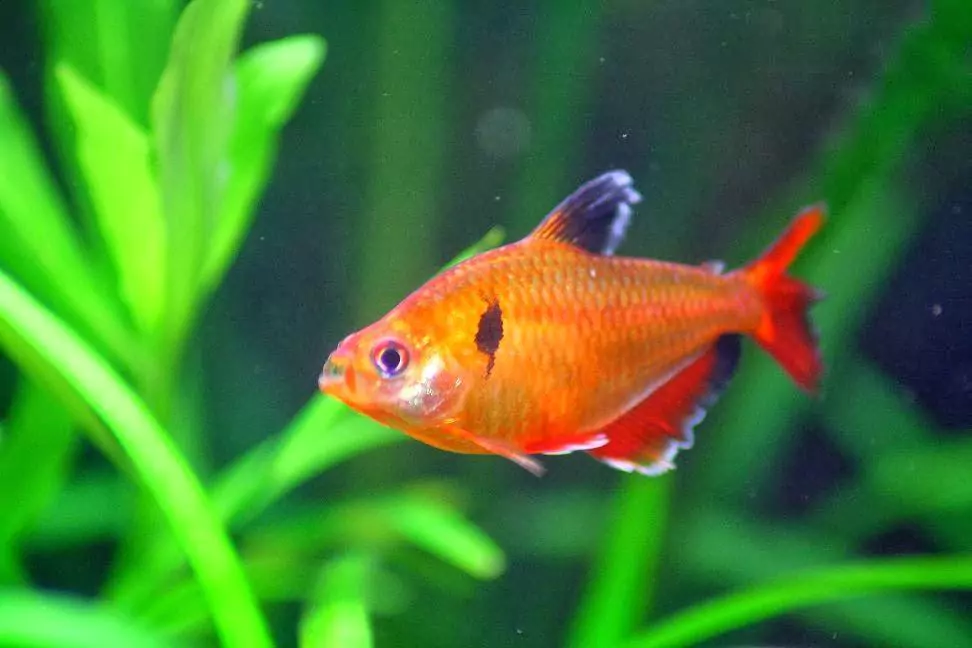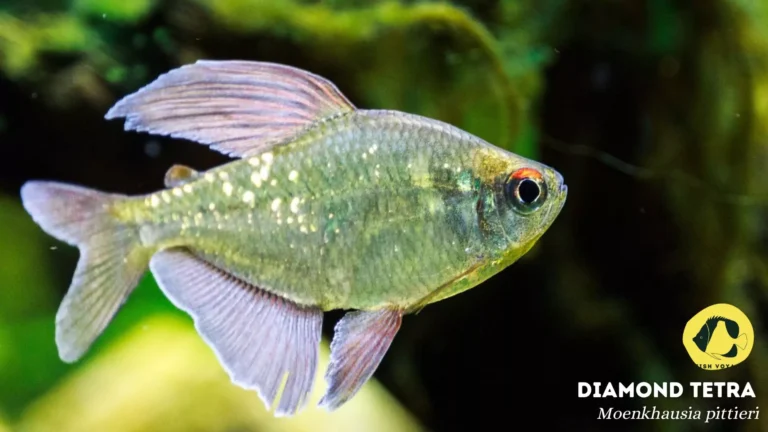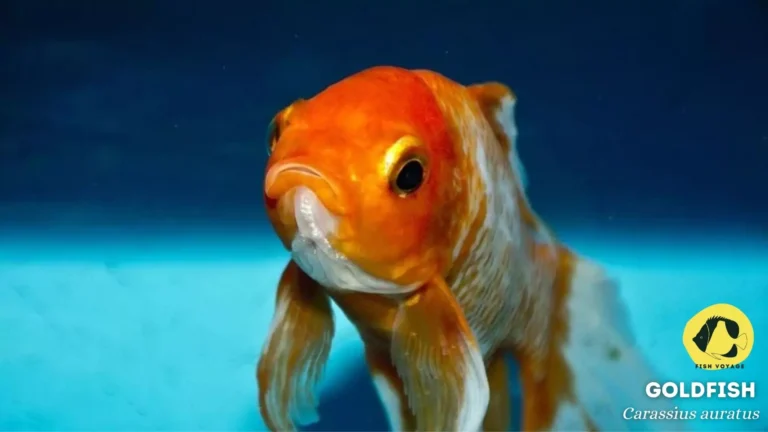The Ultimate Guide: Maintaining Serpae Tetra pH Levels

Overview of Serpae Tetras
Serpae Tetras, known for their vibrant red coloring and schooling behavior, are a popular choice among aquarium enthusiasts. These South American freshwater fish add a lively touch to aquariums, creating a captivating aquatic display. Characterized by their distinctive red fins and semi-aggressive nature, Serpae Tetras thrive in community setups, making them a sought-after addition to many aquariums.
Importance of Maintaining Optimal pH Levels for Aquarium Fish
Maintaining an optimal pH level is a fundamental aspect of responsible aquarium management. It directly influences the health, behavior, and overall well-being of fish. The pH level of aquarium water affects various biological processes, including nutrient absorption, enzyme activity, and the effectiveness of the fish’s immune system. For Serpae Tetras, achieving and sustaining the right pH balance is crucial for their long-term health and vitality.
Significance of pH in Serpae Tetra Care
In the context of Serpae Tetra care, understanding and managing pH levels is paramount. This blog post will delve into the specific pH requirements of Serpae Tetras, exploring the impact of pH on their behavior, breeding habits, and overall adaptability. By gaining insights into the significance of pH in Serpae Tetra care, aquarium enthusiasts can ensure a thriving and harmonious environment for these captivating fish.
Understanding pH in Aquariums
Explanation of pH and Its Impact on Water Chemistry
- pH Demystified: pH, or potential hydrogen, is a measure of the acidity or alkalinity of water. On the pH scale, which ranges from 0 to 14, lower values indicate acidity, higher values indicate alkalinity, and 7 is considered neutral. Understanding this scale is essential for maintaining a balanced aquatic environment for Serpae Tetras.
- Water Chemistry Dynamics: pH plays a pivotal role in water chemistry, influencing the solubility of minerals, nutrient availability, and the effectiveness of chemical processes within the aquarium. This, in turn, directly impacts the health and vitality of Serpae Tetras, making it imperative for aquarists to grasp the intricacies of pH dynamics.

Ideal pH Range for Serpae Tetras
- Target pH Zone: Serpae Tetras thrive in a slightly acidic to neutral pH range. The ideal pH for these vibrant fish typically falls between 6.0 and 7.0. Maintaining the pH within this specific range ensures that Serpae Tetras can exhibit their natural behaviors, maintain proper physiological functions, and resist stress-related health issues.
- Adaptation Considerations: While Serpae Tetras are adaptable, sudden fluctuations outside their preferred pH range can induce stress and impact their overall well-being. Consistency in maintaining the optimal pH is key to fostering a comfortable and thriving environment for these captivating aquarium residents.
Factors Influencing pH Levels in Aquariums
- Water Source Variation: The pH of tap water can vary, and understanding your water source is crucial. Factors such as water hardness, dissolved minerals, and the presence of carbon dioxide can influence the initial pH of the aquarium water.
- Biological Activity: The biological processes in the aquarium, such as the nitrogen cycle, can contribute to pH changes. The breakdown of organic matter and the production of ammonia and nitrites can influence the overall acidity or alkalinity of the water.
- Substrate and Decor: The type of substrate and decorations in the aquarium can influence pH. For instance, certain substrates or decorations may leach minerals into the water, affecting its pH over time.
- Aeration and Filtration: Adequate aeration and efficient filtration play a role in stabilizing pH levels. Proper aeration helps maintain oxygen levels and reduces the risk of pH fluctuations caused by the accumulation of carbon dioxide.
Understanding these factors empowers aquarium enthusiasts to proactively manage and maintain the optimal pH levels for Serpae Tetras, ensuring their well-being and longevity in the aquarium setting.
Importance of pH for Serpae Tetras
Effects of pH on Serpae Tetra Health and Behavior
- Physiological Well-being: The pH level of the aquarium water profoundly influences the overall health of Serpae Tetras. Maintaining the appropriate pH range ensures that essential physiological functions, such as enzyme activity and nutrient absorption, occur optimally. This, in turn, contributes to the overall vitality and longevity of these captivating freshwater fish.
- Behavioral Expressions: Serpae Tetras are known for their lively and interactive behaviors. The pH of the water directly affects their behavior, with deviations from the ideal range potentially inducing stress. A balanced pH encourages natural behaviors, including schooling, exploration, and vibrant displays of color, allowing enthusiasts to appreciate the full spectrum of Serpae Tetra characteristics.
pH-Related Stress and Its Consequences
- Stress Indicators: Fluctuations in pH levels can act as stressors for Serpae Tetras. Stress indicators, such as subdued colors, erratic swimming patterns, or reduced appetite, may manifest when the pH deviates from the preferred range. Chronic stress weakens their immune system, making them more susceptible to diseases.
- Impact on Disease Resistance: Maintaining a stable pH environment is crucial for bolstering the immune response of Serpae Tetras. Stress-induced by pH fluctuations weakens their defenses, making them more susceptible to common aquarium diseases. Consistent pH management is, therefore, a preventive measure against potential health issues.
Role of pH in Breeding and Reproduction
- Breeding Behavior Triggers: The pH of the water plays a pivotal role in triggering the breeding behavior of Serpae Tetras. These fish exhibit spawning behaviors under specific pH conditions. Understanding and maintaining the optimal pH range is essential for encouraging successful breeding activities in a controlled aquarium environment.
- Egg Development and Fry Survival: pH influences the development of Serpae Tetra eggs and the survival of fry. Deviations from the ideal pH range during the breeding process can impact egg viability and hinder the survival of newly hatched fry. Precise pH management is, therefore, crucial for ensuring successful reproduction and the growth of healthy offspring.
Understanding the nuanced impact of pH on Serpae Tetra health, behavior, and reproduction empowers aquarium enthusiasts to create a stable and nurturing environment for these vibrant freshwater fish.
Testing and Monitoring pH
Recommended pH Testing Kits for Aquariums
- Reliable Testing Tools: Investing in reliable pH testing kits is fundamental for accurate aquarium management. Opt for reputable brands that offer liquid or digital testing options for precise pH measurements. Well-reviewed kits, such as API Aquarium pH Test Kit, ensure dependable results, aiding aquarists in maintaining optimal pH levels for Serpae Tetras.
- Multi-Parameter Kits: Consider multi-parameter testing kits that also measure other water parameters like ammonia, nitrites, and nitrates. This comprehensive approach allows for a holistic assessment of water quality, contributing to the overall health of the aquarium ecosystem.
How to Properly Monitor and Adjust pH Levels
- Regular Monitoring Routine: Establish a consistent routine for monitoring pH levels in the aquarium. Test the water at least once a week, especially if there have been recent changes or additions to the tank. Regular monitoring provides early detection of pH fluctuations, allowing for prompt corrective measures.
- Gradual pH Adjustments: When adjustments are necessary, avoid rapid changes in pH levels, as sudden shifts can stress Serpae Tetras. Utilize pH buffers or conditioners designed for freshwater aquariums. These products help stabilize pH levels gradually, ensuring a more controlled and fish-friendly transition.
- Monitoring Environmental Factors: Pay attention to external factors that may influence pH, such as water source changes or substrate alterations. Understanding these influences aids in preemptive adjustments, preventing sudden pH shifts that could impact the well-being of Serpae Tetras.
Frequency of pH Testing for Serpae Tetras
- Routine Testing Schedule: Establish a routine pH testing schedule, considering the specific needs of Serpae Tetras. Given their sensitivity to pH changes, a weekly testing frequency is recommended. However, increase the testing frequency during critical periods, such as when introducing new tank mates or during the breeding season.
- Observation and Adjustments: In addition to routine testing, observe the behavior and appearance of Serpae Tetras regularly. Any signs of stress or unusual behavior may prompt additional pH testing. Immediate adjustments should be made if there are indications of pH-related issues to maintain a stable and comfortable environment for the fish.
Consistent testing and monitoring, coupled with thoughtful adjustments, contribute to the overall well-being of Serpae Tetras, ensuring a balanced and thriving aquarium habitat.
Maintaining Optimal pH Levels
Natural Ways to Adjust and Stabilize pH
- Curative Plants: Integrate pH-adjusting plants into the aquarium, such as Java Moss or Hornwort. These aquatic plants can naturally influence the pH by utilizing carbon dioxide during photosynthesis, promoting a stable and fish-friendly environment for Serpae Tetras.
- Driftwood and Peat Moss: Incorporate driftwood or peat moss into the aquarium setup. These natural substances release tannins, which can slightly lower the pH over time. However, it’s essential to monitor these changes and adjust quantities accordingly to prevent drastic pH fluctuations.
Introduction to pH Buffers and Conditioners
- pH Buffers: Utilize pH buffers to maintain stable pH levels within the desired range. Choose buffers designed for freshwater aquariums and follow recommended dosage guidelines. pH buffers act as a safeguard against pH fluctuations, providing a controlled and gradual adjustment to the aquarium water.
- pH Conditioners: pH conditioners, specifically formulated for freshwater environments, can be valuable in stabilizing and optimizing pH. These products often contain essential minerals that contribute to water hardness, creating an environment conducive to the well-being of Serpae Tetras.
Tips for Creating a Suitable Environment for Serpae Tetras
- Substrate Selection: Choose a substrate that aligns with the preferred pH range of Serpae Tetras. Certain substrates, like crushed coral, can act as natural buffers, influencing and stabilizing the pH levels in the aquarium.
- Aquascape Considerations: Thoughtful aquascaping can impact pH stability. Incorporate rocks and decorations that not only enhance the visual appeal but also contribute to the maintenance of optimal pH levels. Ensure that these additions are compatible with the specific needs of Serpae Tetras.
- Adequate Filtration: Efficient filtration is crucial for maintaining water quality and stability. A well-maintained filter helps control the accumulation of organic matter, preventing potential pH fluctuations caused by the breakdown of waste in the aquarium.
Implementing a combination of natural methods, pH buffers, and conditioners ensures a balanced approach to maintaining optimal pH levels for Serpae Tetras. These strategies contribute to a harmonious and sustainable aquatic environment for these captivating freshwater fish.
Common pH Issues and Solutions
Identification of Common pH Problems in Aquariums
- Acidic or Alkaline Extremes: Watch for extreme pH values outside the ideal range for Serpae Tetras (6.0 to 7.0). High acidity or alkalinity can lead to stress and health issues. Regular pH testing is essential to catch these extremes early on.
- pH Fluctuations: Sudden fluctuations in pH levels, often caused by factors like overfeeding, substrate changes, or inadequate water changes, can be problematic. Identifying the root cause is crucial for effective resolution.
Troubleshooting Guide for Addressing pH Fluctuations
- Review Recent Changes: Assess any recent changes to the aquarium environment, including new additions, decorations, or alterations to the filtration system. Identifying and reversing recent changes that may have triggered pH fluctuations is the first step in resolving the issue.
- Gradual Adjustments: If pH fluctuations are detected, avoid hasty corrections. Instead, make gradual adjustments using pH buffers or conditioners to minimize stress on Serpae Tetras. Rapid changes can induce stress and negatively impact their well-being.
- Monitor Water Parameters: Regularly monitor other water parameters, such as ammonia, nitrites, and nitrates, as imbalances in these areas can contribute to pH instability. Addressing overall water quality can have a positive effect on pH levels.
Advice on Resolving Persistent pH Issues
- Consult with Aquarium Professionals: If pH issues persist despite corrective measures, seek advice from aquarium professionals or experienced hobbyists. They can provide insights into specific challenges related to your aquarium setup and offer tailored solutions.
- Water Source Evaluation: Evaluate the pH of your tap water, as changes in water source pH can impact the aquarium environment. Consider using water conditioners designed to stabilize pH and make necessary adjustments during water changes.
- Consideration of Fish Preferences: Some fish, including Serpae Tetras, may display preferences for specific pH ranges. Understanding and catering to these preferences can contribute to long-term aquarium success. Research the natural habitat of Serpae Tetras for additional insights.
By proactively identifying and addressing common pH issues in aquariums, aquarists can ensure a stable and conducive environment for Serpae Tetras. This troubleshooting guide empowers enthusiasts to maintain optimal pH levels and promote the well-being of these vibrant freshwater fish.
Conclusion
Recap of the Importance of pH for Serpae Tetras
In conclusion, the optimal pH level is a cornerstone in the care and well-being of Serpae Tetras. From influencing their health and behavior to playing a crucial role in breeding, maintaining the right pH is essential for creating a thriving aquatic environment. As we’ve explored in this guide, understanding and managing pH levels contribute significantly to the overall success of keeping Serpae Tetras in home aquariums.
Call to Action for Responsible Aquarium Maintenance
Maintaining a healthy environment for Serpae Tetras goes beyond pH management. As stewards of these captivating aquatic creatures, it’s our responsibility to uphold rigorous aquarium maintenance practices. Regular water testing, thoughtful aquascaping, and vigilant observation of fish behavior are key components of responsible aquarium ownership. By committing to these practices, we ensure the well-being and longevity of our beloved Serpae Tetras.
Encouragement for Readers to Share Their Experiences and Tips
Aquarium enthusiasts form a vibrant community, and sharing experiences and tips enhances collective knowledge. We encourage our readers to share their Serpae Tetra stories, insights, and tips in the comments section below. Whether you’ve successfully managed pH levels, encountered challenges, or discovered unique methods for creating an ideal habitat, your contributions can benefit fellow hobbyists. Together, let’s foster a community dedicated to the well-being of Serpae Tetras and the joy of aquarium keeping.
As we embark on this aquatic journey, let’s continue to learn, share, and cultivate an environment where Serpae Tetras flourish and bring joy to enthusiasts around the world.
Additional Resources
Recommended Reading on Serpae Tetra Care
- The Complete Guide to Freshwater Aquariums by Thierry Maitre-Alain and Christian Piednoir: Dive into the comprehensive world of freshwater aquariums with a focus on Serpae Tetra care. This guide offers valuable insights, from tank setup to specific care requirements.
- The Complete Home Aquarium by Hans J. Mayland: For a specialized approach to livebearers, including Serpae Tetras, this book provides detailed guidance on their unique needs and maintaining optimal aquarium conditions.
Links to Aquarium Forums and Communities
- Aquarium Advice: Engage in insightful discussions and seek advice on Serpae Tetra care at Aquarium Advice Forums. Connect with experienced hobbyists, share your experiences, and stay updated on the latest insights.
- Reddit – r/Aquariums: Join the thriving community on Reddit’s r/Aquariums. Pose questions, share your Serpae Tetra journey, and benefit from the collective wisdom of aquarium enthusiasts worldwide.
Product Recommendations for pH Management
- API Aquarium pH Test Kit: Ensure precise pH monitoring with the API Aquarium pH Test Kit. Trusted for its accuracy, this kit helps you maintain optimal pH levels for Serpae Tetras.
- Seachem Neutral Regulator: Stabilize pH effectively with Seachem Neutral Regulator, a product specifically designed for freshwater aquariums. Create a balanced environment for Serpae Tetras with this reliable pH management solution.
Explore these resources to deepen your understanding of Serpae Tetra care, connect with fellow enthusiasts, and choose trusted products for effective pH management.
Frequently Asked Questions (FAQs)
1. What is the ideal pH range for Serpae Tetras, and why is it crucial?
The ideal pH range for Serpae Tetras is between 6.0 and 7.0. This range is crucial because it supports their overall health, influences behavior, and plays a vital role in breeding. Maintaining the right pH ensures a stable and comfortable environment for these vibrant freshwater fish.
2. How often should I test the pH levels in my Serpae Tetra aquarium?
It is recommended to test the pH levels in your Serpae Tetra aquarium at least once a week. Regular monitoring is essential, especially during critical periods such as introducing new tank mates or during the breeding season. This helps detect any fluctuations early on and allows for timely adjustments.
3. Can I use natural methods to adjust the pH in my aquarium for Serpae Tetras?
Yes, natural methods such as incorporating pH-adjusting plants, driftwood, or peat moss can help adjust and stabilize pH levels in the aquarium. These natural elements contribute to a gradual and fish-friendly adjustment, creating a more balanced environment for Serpae Tetras.
4. How do I troubleshoot sudden pH fluctuations in my Serpae Tetra aquarium?
To troubleshoot sudden pH fluctuations, review recent changes in the aquarium environment, such as new additions, substrate changes, or alterations to the filtration system. Make gradual adjustments using pH buffers or conditioners to minimize stress on Serpae Tetras, and monitor water parameters for overall balance.
5. Are there specific pH buffers or conditioners recommended for Serpae Tetras?
Yes, pH buffers and conditioners designed for freshwater aquariums are recommended for Serpae Tetras. Trusted products like [Product Name] and [Product Name] are specifically formulated to stabilize and optimize pH levels, ensuring a conducive environment for the well-being of Serpae Tetras.






